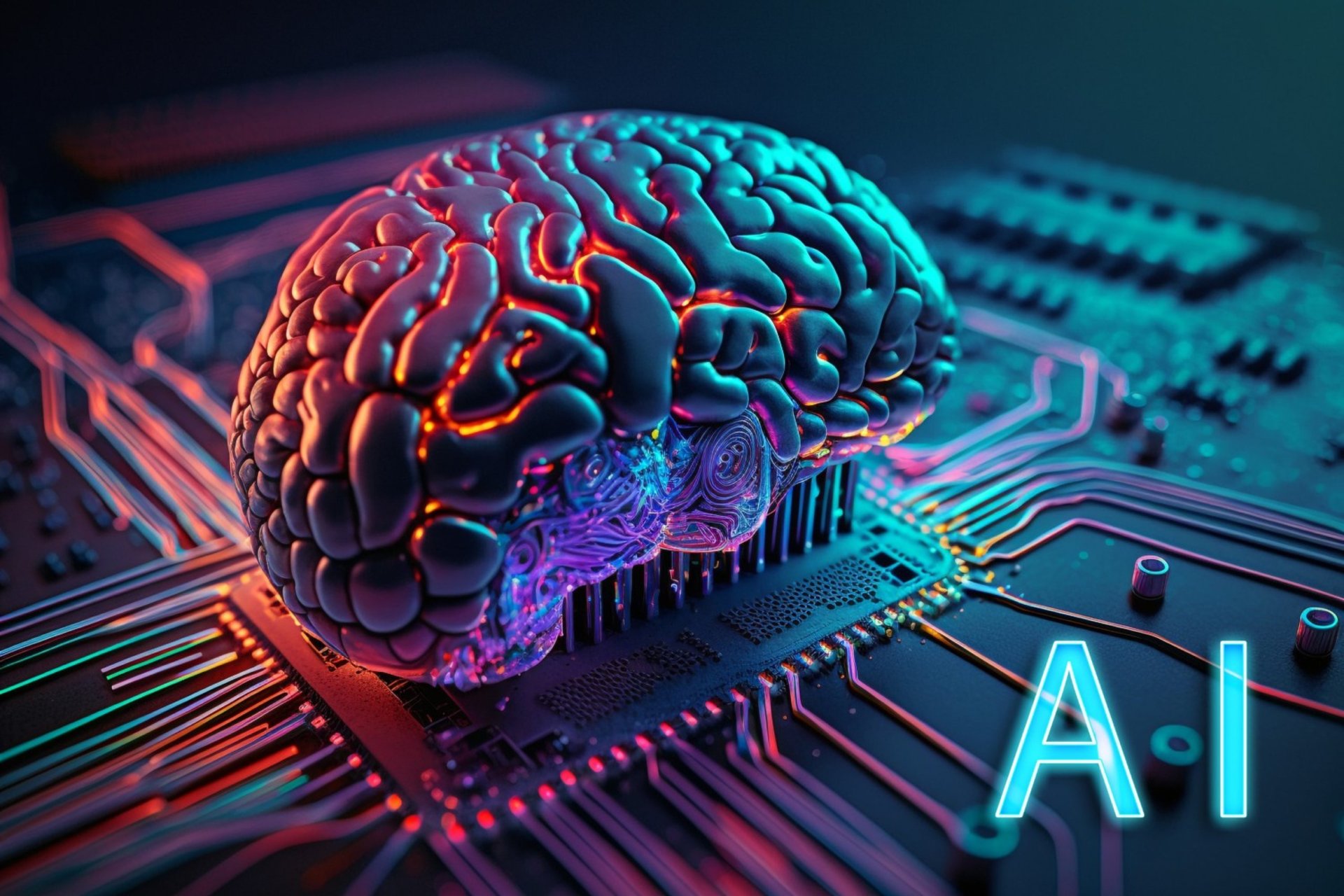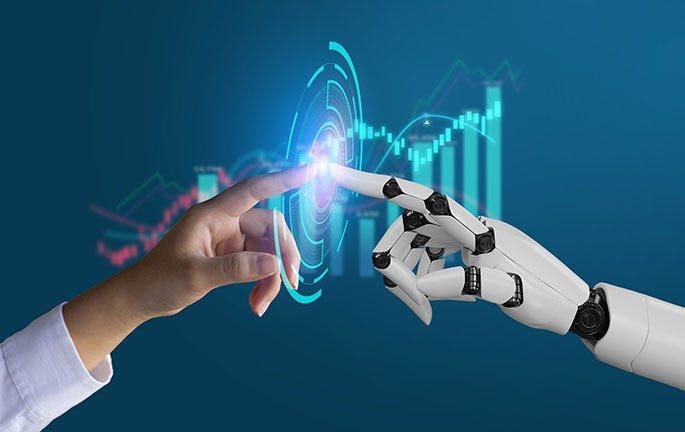
Exploring the Convergence of AI/ML and Blockchain: Discerning Hype from Enduring Relevance in the IT Landscape
In the realm of cutting-edge technologies, two giants have emerged, each promising to revolutionize industries and reshape the way we interact with data and systems. Artificial intelligence (AI) and machine learning (ML), alongside blockchain technology, have become ubiquitous within the IT sphere. Captivating headlines tout their revolutionary potential, but critical analysis is necessary to differentiate genuine progress from fleeting hype. Artificial Intelligence (AI) and Machine Learning (ML) have dazzled with their ability to analyze, learn, and automate, while Blockchain has captivated imaginations with its decentralized, tamper-resistant ledger. This article explores the growth trajectories and enduring relevance of these transformative technologies.
TECHNOLOGY
Vinodh Nagarajaiah
6/7/20246 min read
The Rise of AI/ML: Empowering Machines with Cognitive Abilities:


AI/ML encompasses the field of computer science that imbues machines with the capacity to mimic human cognitive functions, such as learning and problem-solving. Machine learning algorithms, trained on vast datasets, can identify patterns, make predictions, and even automate complex tasks. From facial recognition software to intelligent chatbots and autonomous vehicles, AI/ML is rapidly transforming industries.
Hype vs. Reality: AI and ML have been riding a wave of hype, fueled by breakthroughs in deep learning, natural language processing, and computer vision. From chatbots to autonomous vehicles, AI/ML applications have permeated almost every industry, promising to streamline operations, improve decision-making, and deliver personalized experiences. The growth trajectory of AI/ML is evident in the rapid adoption by companies seeking to harness the power of data and algorithms to gain a competitive edge. While AI/ML has garnered significant hype, fueled by impressive advancements, it’s crucial to recognize it as a nascent field. True artificial general intelligence (AGI), a machine with human-level understanding, remains a distant aspiration.
Growth and Relevance: Despite inherent limitations, AI/ML is experiencing phenomenal growth. Its applications are far-reaching, encompassing logistics optimization, personalized customer experiences, and the acceleration of scientific discovery. The relevance of AI/ML lies in its ability to crunch massive amounts of data, identify patterns, make predictions, and continuously improve through learning. This has led to advancements in predictive analytics, recommendation systems, fraud detection, and more. However, challenges such as bias mitigation, ethical concerns, and data privacy remain critical considerations as AI/ML continues to evolve.
Pain Areas:
Data Challenges: AI/ML models require high-quality, diverse datasets for training, but obtaining labeled data can be costly and biased. Access to large datasets is often restricted due to privacy concerns, limiting algorithm performance.
Interpretability and Transparency: Many AI/ML models are opaque, making it difficult to understand their decision-making processes. Lack of transparency hampers trust and raises ethical concerns, particularly in critical domains like healthcare and finance.
Bias Risks: AI algorithms can inherit biases from training data, leading to discriminatory outcomes. Addressing bias requires careful data preprocessing, algorithmic fairness techniques, and continuous monitoring.
Resource Demands: Training and deploying complex AI models require significant computational resources, posing challenges in terms of scalability, cost, and infrastructure management.
Ethical and Regulatory Dilemmas: AI raises ethical dilemmas regarding privacy, consent, and accountability. Developing regulations and standards for ethical AI governance and compliance is crucial.
Unraveling Blockchain: The Immutable Ledger of Trust


Blockchain burst into the scene with the meteoric rise of cryptocurrencies like Bitcoin and Ethereum. The concept of a decentralized, immutable ledger captured the imagination of tech enthusiasts and entrepreneurs alike. Beyond cryptocurrencies, blockchain found applications in supply chain management, healthcare records, smart contracts, and digital identities, among others.
Blockchain technology underpins a distributed ledger system, enabling secure and transparent recording of transactions. Imagine a shared, continuously updated spreadsheet accessible to all network participants, yet impervious to manipulation. This fosters trust in decentralized environments by eliminating the need for a central authority.
Hype vs. Reality: The hype surrounding blockchain revolves around its potential to disrupt traditional systems, eliminate intermediaries, enhance transparency, and bolster security. Its growth is evidenced by the proliferation of blockchain platforms, protocols, and decentralized applications (DApps). Blockchain’s relevance is rooted in its ability to provide trustless transactions, secure record-keeping, and tamper-resistant data storage, addressing longstanding challenges in various domains.
Growth and Relevance: Blockchain initially captured global attention through cryptocurrencies like Bitcoin. While the initial fervor surrounding cryptocurrencies has waned, blockchain technology’s potential extends far beyond the financial domain. It possesses the power to revolutionize supply chain management, secure voting systems, and even redefine ownership rights in the digital age. Businesses are actively exploring its potential to streamline processes, enhance security, and build trust with stakeholders. As regulations evolve and use cases mature, blockchain is poised for significant growth.
Pain Areas:
Scalability and Throughput: Traditional Blockchain networks face limitations in transaction throughput and processing speed, hindering scalability and user experience.
Interoperability and Standards: Lack of interoperability among Blockchain platforms impedes data exchange and collaboration. Establishing common standards and interoperability frameworks is essential for a unified Blockchain ecosystem.
Energy Consumption and Environmental Impact: Proof-of-Work consensus mechanisms consume significant energy, raising concerns about sustainability and environmental impact. Exploring alternative consensus mechanisms is necessary to reduce energy consumption.
Regulatory Uncertainty and Compliance: Varied regulatory landscapes for Blockchain and cryptocurrencies create uncertainty and legal complexities. Establishing clear regulations and compliance frameworks is essential for mainstream adoption.
Security and Privacy Concerns: While Blockchain offers inherent security, vulnerabilities in smart contracts and decentralized applications pose risks. Ensuring robust security practices and addressing governance challenges are crucial for protecting users’ assets and data.
Convergence: Blockchain AI — A Synergistic Approach


AI/ML and blockchain, while distinct technologies, exhibit remarkable synergy when combined. As AI/ML and blockchain mature, the convergence of these technologies presents a tantalizing promise of unlocking new possibilities.
Strengths: Blockchain AI, also known as decentralized AI, combines the strengths of AI/ML’s analytical prowess with blockchain’s trust and transparency.
Enhanced Data Security: By leveraging blockchain’s immutable ledger, AI/ML algorithms can operate on secure, tamper-proof data, reducing the risk of data breaches and manipulation.
Transparent and Ethical AI: Blockchain’s transparency and auditability can address concerns around biased AI algorithms. By recording the entire data lineage and model training process on the Blockchain, stakeholders can verify the fairness and ethicality of AI systems.
Decentralized AI Marketplaces: Blockchain facilitates the creation of decentralized AI marketplaces where data providers, AI developers, and consumers can interact without intermediaries. Smart contracts automate transactions, ensuring fair compensation and data privacy compliance.
Privacy Preservation: Blockchain’s encryption and privacy features can be integrated with AI/ML algorithms to ensure sensitive data remains confidential while still allowing for analysis and insights generation.
Scalable AI Infrastructure: Blockchain’s distributed nature enables scalable AI infrastructure, where computational tasks can be distributed across a network of nodes. This decentralized computing power accelerates AI model training and inference tasks.
Smart Contracts for AI Operations: Smart contracts on blockchain platforms can automate AI-related processes, such as data sharing agreements, model training, and result verification, streamlining workflows.
Tokenization of AI Assets: Blockchain enables the tokenization of AI models, data, and services, creating new avenues for monetization and incentivization within the AI ecosystem. Token-based incentives encourage collaboration and innovation.
Overcoming Challenges and Driving Adoption: Despite the promise of blockchain AI, challenges such as scalability, interoperability, regulatory compliance, and energy consumption need to be addressed. Interdisciplinary collaboration between AI experts, blockchain developers, legal professionals, and policymakers is crucial to navigate these challenges and drive widespread adoption.
Real-world use cases of blockchain AI are already emerging. From decentralized AI marketplaces to AI-powered blockchain analytics for fraud detection and supply chain optimization, organizations are exploring innovative ways to leverage this convergence.
Conclusion: A Transformative Journey Ahead


As AI/ML and Blockchain technologies continue to evolve, their convergence represents a transformative journey ahead. The synergy between AI’s intelligence and Blockchain’s security and transparency opens doors to innovations that were previously unimaginable. From decentralized autonomous organizations (DAOs) to AI-driven prediction markets and self-sovereign AI agents, the possibilities are vast.
To fully realize this potential, collaboration among technologists, policymakers, and industry leaders is crucial. Addressing technical challenges, ensuring ethical AI practices, and navigating regulatory frameworks will pave the way for a future where Blockchain AI drives positive impact across sectors, shaping a more efficient, inclusive, and trustworthy digital ecosystem. In the journey towards realizing the full potential of blockchain AI, we stand at the brink of a new era of technological empowerment and societal progress.
Both AI/ML and blockchain represent transformative technologies with the potential to reshape our world. Managing expectations regarding their near-term capabilities is crucial, but their long-term relevance is undeniable.



